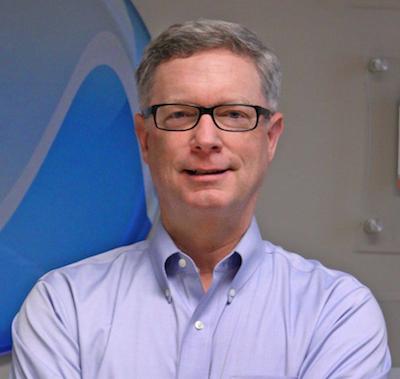
Irv Lichtenwald , CEO of Medsphere Systems Corporation
A creatively illustrative scene from the 2008 film The Hurt Locker follows the primary character, William James, on a trip to a local grocery store.
James is an ordnance disposal technician home from the war in Iraq whose wife asked him to pick up a few things from the store, including cold cereal. As James stands dazed and overwhelmed before the wall of cereal options, the camera pans back to reveal an entire aisle wall—floor to ceiling, end to end— of cereal boxes from which to choose. James is smaller in the frame, looking less and less up to the task before finally grabbing a box and throwing it in the cart with obvious frustration. He’s decided because he must, but the decision comes with scant confidence or satisfaction because there is little in the way of a ‘best’ decision, a greater purpose.
Would that such consternating decisions were limited to cereal.
As data demonstrates, putting healthcare consumers in similar situations—asking them to opt-in, to make active choices about their health and health care—yields similar results: Choices poorly made about which most will be unhappy.
The problem is particularly acute for those who need the most help—those at the tail end of the economic spectrum with few resources, little time and not much information. In the language of behavioral economics, these people live in an environment of scarcity, especially with regard to time and mental resources.
“That’s why active policies haven’t proved very helpful for the 40 million U.S. citizens who live in poverty,” write Austin Frakt and Gilbert Benavidez in The Upshot blog on NYTimes.com. “Work by the University of Southern California economics professor Leandro Carvalho and colleagues showed that low-income people were more ‘present-biased’ after payday, worrying about the immediate more than the long-term effects of their decisions.”
Returning to the Best Picture Oscar winner from 2008, cereal is an ‘active’ choice James must make, an opt-in he has to choose. Anxiety over whether he picked the right cereal may impact how he makes subsequent choices. Contrast that with the implied ‘passive’ choices he had every day in the military. Every morning in the mess, he got an anxiety-free breakfast, whatever was served, unless he opted out.
Now apply scarcity and active decision-making to understanding why workplace wellness programs don’t really work. Having a gym membership your company provides is one thing; actually going to the gym regularly is another.
“The challenge is that a lot of these programs are designed with the idea that we’re perfectly rational people,” says David Asch of the Wharton School. “That a little bit of feedback … is naturally going to fall upon a rational human being who’s going to say, ‘You know, you’re right.’ The trouble is, I don’t necessarily want to get on the scale in the morning and get that feedback. Sometimes that feedback isn’t so helpful. Sometimes it’s a little aversive.”
So, what’s an overwhelmed, irrational homo sapiens with too little time, information and money to do?
Ideally, engage in more passive decision-making, even if that sounds contradictory.
“These are programs that don’t require individual action; you’re not expected to add another task to the to-do list,” say Frakt and Benavidez. “Examples include default enrollment in a 401(k); in the health realm, they are public health efforts like water fluoridation and air quality improvement.”
Unfortunately, it is rather difficult for people to set up passive scenarios all by themselves. It’s hard and probably unsafe to fluoridate your own water. We can’t improve air quality by ourselves where we live.
But specific industries, like, er … healthcare, for example, can create scenarios where passive decision-making is more common. Healthcare IT is essential in that goal.
Take EHRs and patient portals, for example. Practices and hospitals that register patients in the system can then send regular updates to personal email accounts. After an initial active choice to register, patients need to do little more than open their email—a fairly passive decision in today’s world—to receive messages about appointments, medications, diet, etc.
Will an email improve health? No more so than an unused gym membership. But passive communication qualifies as a nudge, which in behavioral economics is what increases the likelihood that a person makes a particular choice that favors the desired outcome.
Patient portals and passive communication also enable providers to develop personalized incentive plans that meet the needs of individual patients.
“Does depression, for example, predispose you to become avoidant and not wanting to step on a scale when you know that you’re going to see a number that you don’t like?” says the University of Pennsylvania’s Shreya Kangovi. “Are there other factors involved? We need to figure out who benefits from feedback so that we can start to tailor these programs for the individuals who are most likely to benefit.”
And we need to tailor the programs in such a way that some patients have fewer, not more, choices. There will always be the highly motivated, proactive patient who makes sound financial and health decisions and who needs few, if any, nudges. As with wellness programs, we’re providing incentives for these people to do what they’d most likely do anyway. The irony is that those who need the most help are often those most avoidant.
Is the juxtaposition of cereal selection and bomb disposal relevant for a conversation about making good health choices? As it relates to urgency and purpose, yes. But while the urgency of an unexploded bomb is self-evident, the importance of positive health choices is often shrouded in personal denial. Yet the currency of both transactions is human life.
In the age of digital healthcare and industry transformation, one task of healthcare and healthcare IT is to help patients make positive choices about urgent concerns, even when they may not know they’re choosing.
Irv Lichtenwald is president and CEO of Medsphere Systems Corporation, the solution provider for the CareVue electronic health record.
